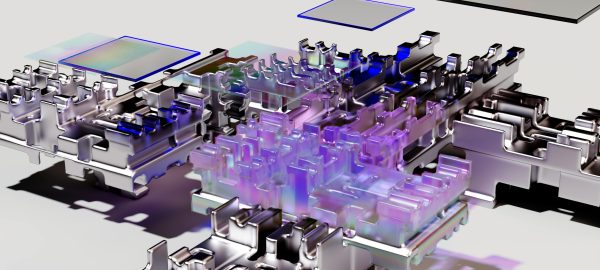According to this theory, human evolution is contingent on digital transformations. This thinking also affects social questions such as the future of democracy or the diverse relations of each culture.
What is the meaning of transhumanism?
Transhumanism, or h+, is a philosophical current that began to take shape in the middle of the 20th century, and its main objective is to enhance and improve all human faculties, both physical and cognitive. It even aspires to eliminate the biological limits of humanity through technological implantation in the organism.
This philosophy affirms that the human being can be subjected to all kinds of physical modifications using science and technology, in order to gradually improve the human species, which has made it one of the main topics of philosophical debate in recent decades, as experts in this field such as Francis Fukuyama have pointed out. While there are other philosophers who speak of transhumanism as a utopia.
Origin and history of this trend
The English biologist and philosopher Julian Huxley originated the concept of transhumanism in 1957. In his essays of the same name, he referred to the way in which man could be improved through social and cultural transformation. Over time, however, the movement adapted the theory by focusing on technology.
Julian Huxley gave the concept its name, but the real theoretical development came in the late 20th century. Futurologist F.M. Esfandiary, in 1960, began to lecture on new ways of conceiving man, at which time technology was introduced as an evolutionary tool, giving way to today’s posthumanism and transhumanism.
Some time later, in 1980, the University of California became the meeting place for the first transhumanists. As early as 1986, the theologian Eric Drexler published the book “Machines of Creation: The Future Age of Nanotechnology”. The first discussions on nanotechnology and molecular assembly took shape in this book. Thus, in 1988, the World Transhumanist Association, founded by Nick Bostrom and David Pearce, was established.
Main characteristics of transhumanism
Firstly, this theory bases human evolution on technology. Therefore, man can only improve, increase and enhance his physical and cognitive qualities if he adopts technological and scientific advances in his organism, such as nanotechnology, genetic engineering, cybernetics, artificial intelligence and machine learning.
On the other hand, there is no limit to this theory. Consequently, experts who base their knowledge on this philosophy claim that humans can change, dominate and override natural events such as old age, guilt, suffering and even death. Furthermore, they believe that man can transform his morphology, choosing between various options for the propagation of the species. Some of the transhumanists go so far as to talk about the possibility of leaving aside the human body by transferring all the “information” contained in each individual into a computer.
This thinking is only concerned with the future, leaving aside the past and the present. It also attempts to overcome cognitive aspects such as social skills, memory, concentration and intelligence, and physical aspects such as death.
Advantages and disadvantages of transhumanism
This philosophy has a number of advantages. Primarily, the use of technology can enhance human intelligence, senses and learning. In this sense, this current seeks to mitigate the defects of people and, therefore, the human being can be perfected to unimaginable limits.
Thanks to technological development, the human body becomes more resistant to disease, thus prolonging life. This also has an effect on the slowing down of ageing.
It is also important to mention the disadvantages. First of all, man can lose his whole human identity. In addition, technology can lead to inequalities between countries and continents, increasing the digital divide and the possibility of social conflicts. On the other hand, the debate concerning moral, judicial and ethical laws arises, generating social confusion.
Examples of transhumanism
There are already uses of technology that provide examples for understanding transhumanism. These are some of the most relevant:
- Gene therapies. Gene therapies are a type of treatment, many of them experimental, that use the transfer of a patient’s cellular genes to cure a particular disease. The main objective of this science is to modify the patient’s genetic data in order to restore normality.
- AI-powered prosthetic implants. Artificial intelligence helps doctors determine the best location for incision and placement of implants. It also helps to design prostheses that improve patients’ biomechanical problems.
- Nanotechnology. Matter is manipulated on an atomic scale to create new structures, materials and devices. This technology has already led to major breakthroughs, particularly in renewable energy, materials production and medicine, including some cancer treatments.
- Organ cloning. In the field of organ and tissue cloning, different processes are being developed on the same technical basis: reproductive and therapeutic cloning. The former seeks to reproduce an individual and the latter seeks, from stem cells, to create those organs and tissues that are compatible with the genetic donor.












